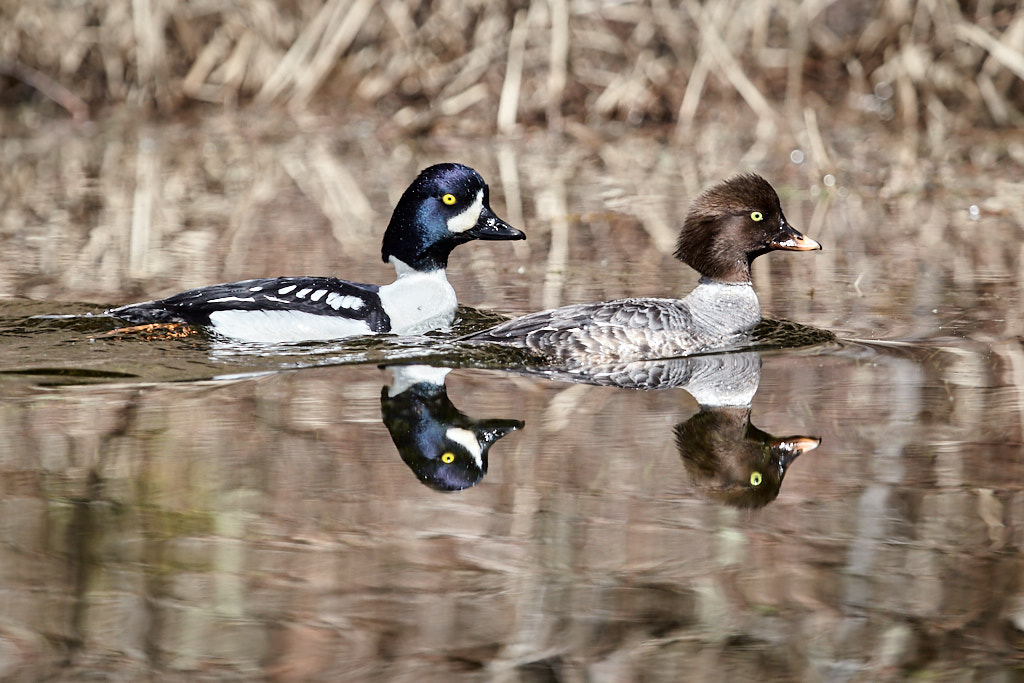
Winter might be thought of as the black and white season with the longer nights, and cold fluffy stuff that lingers, covering up the leaves and bare ground, but it really is a colorful time if you find those ducks. There’s an especially dapper duck, the Barrow’s Goldeneye that is definitely striking. The male has an almost tuxedo appearance, with contrasting black and white areas, and in the sunlight the very dark iridescent purple of its head, with a “crescent” of white between its bill and eye is stunning. Quite gregarious in winter, they form rafts, motoring around in the calm waters of a lake or river, often mixed in with the similar Common Goldeneye duck. From a distance male Barrow’s Goldeneye are distinguished with more black on their back. The very different female doesn’t have the black and white look, but has a cinnamon colored head, grayish brown back and wings, and small patches of white on their folded wings. Their bill is yellow, which helps separate if from the nearly identical female Common Goldeneye which has a dark bill.
December, January, and especially February, animated males tilt their heads all the way back, nearly touching the back of their heads to their backs, momentarily holding it there and making a loud cricket like chirp, as they warm up their mating ritual and show off to other males. They are often seen diving for crustaceans or invertebrates in lakes, or rivers, especially in thefaster moving rapids. They can be seen along the Link River trail “shooting the rapids”, and then paddle hurriedly against the current to try it again. Putnam’s Point at the very north end of Link River, and looking up stream from the Main Street bridge over the Link River, are two locations where larger groups can be seen. At Veteran’s Park boat launch, they are seen mixed with other ducks on Lake Ewauna, where late afternoon is the best time to see the deep purple colors of the males. Early morning, or before sundown, they can be heard winging overhead, with their whistling sound made by wings. They disperse to higher elevation lakes by late spring where eggs are placed in a tree cavity, and then ducklings leap out, and follow their mom to the water. Davis Lake in northern Klamath County is one such lake.
Yes, winter colors may seem drab, but once you see a male Barrow’s Goldeneye, it definitely adds some rainbow to the day.
